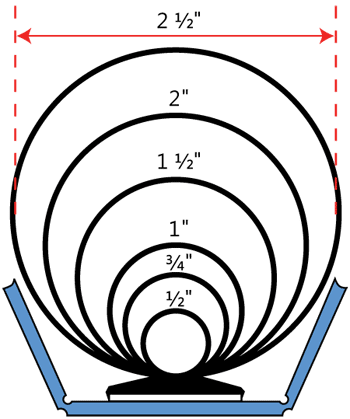
| Measuring
your binder:
Measure horizontally, inside the ring at it's widest point, parallel to flat open cover.
Capacities are in 1/4" to 1/2" increments, ande may be as much as 1/8" variation, depending upon manufacturer. For number of sheets
per capacity, see chart below.
Need info about
D-ring binders?
|
Ring Size
(measured as
shown above)
|
Number of sheets including indexes*
|
16#
Bond | 20#
Bond | 24#
Bond | 50#
Enamel
& Bond | 60#
Enamel
& Bond |
1/2" | 144 | 124
| 100
| 132
| 120
|
3/4" | 216
| 186
| 150
| 198
| 180 |
1" | 288
| 248
| 200
| 264
| 240
|
1 1/4" | 360
| 310
| 250
| 330
| 300
|
1 1/2" | 432
| 372
| 300
| 396
| 360
|
1 3/4"
| 504
| 434
| 350
| 462
| 420
|
2" | 576
| 496
| 400
| 528
| 480
|
2 1/2" | 720
| 620
| 500
| 660
| 600
|
*For tabs, deduct 4 sheets per tab from above totals.For example: 5 tabs = 20 sheets, which would be deducted from the above total number of sheets.
For larger binders, you can approximate the number of sheets by calculating from the totals above. For example, a 2" binder can hold up to 400 sheets of 24# bond, and a 1" binder can hold 200 sheets. Therefore, a 3" binder would be needed to hold up to 600 sheets.